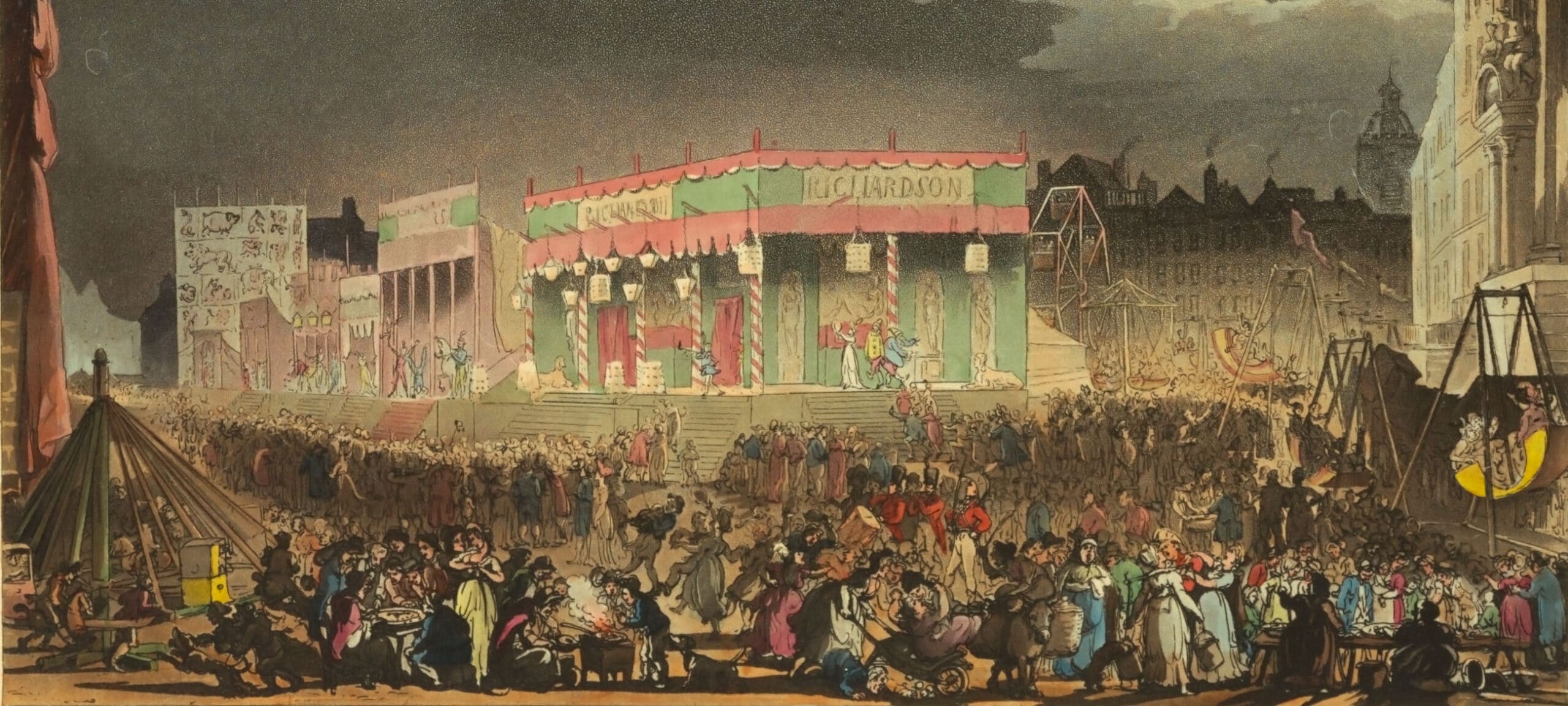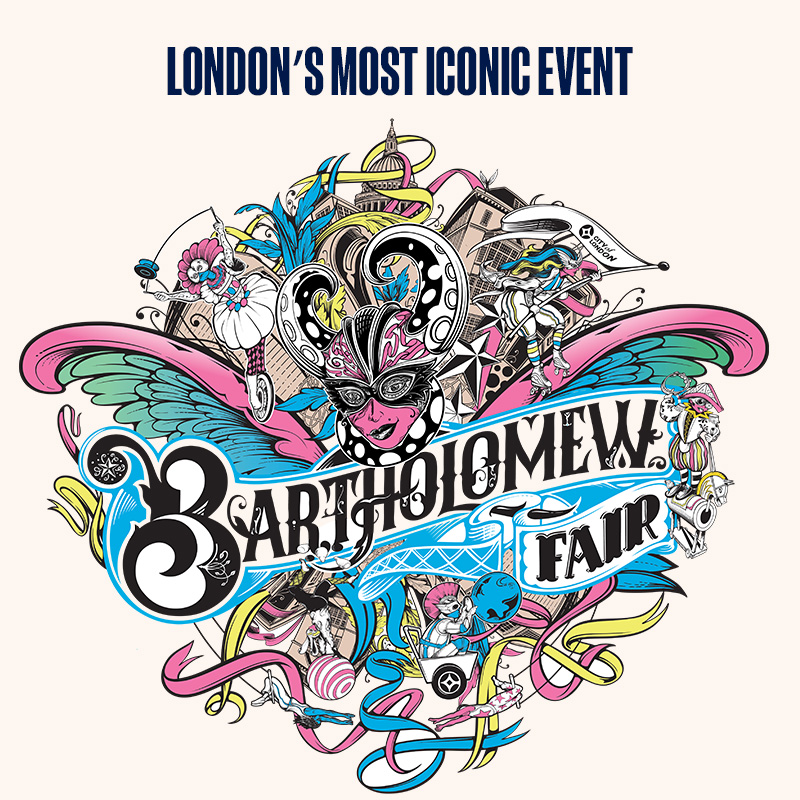
Ancient London Fayres
Greater London has many arcane traditions centred on the annual ancient fairs granted by monarchs to the various ‘villages’ in the area. I lived in suburban Pinner for much of my younger years, where thousands flock to an event established by King Edward III in 1336. As with many London fairs, the occasion in its earlier days was often rowdy, licentious, and even violent, with fears stoked of ‘outsider’ ne'er-do-wells entering the village, keen on mischief of all kinds.
Pinner Fair – 29 May 2024
Aside from the fair (and being the former home of Sir Elton John), ‘Metroland’ Pinner has some fame as the place where the ‘Floating Coffin’ of William and Agnes Loudon can be observed:
Ancient origins of horn fairs
The Charlton Horn Fair
"More like a carnival of the very worst and most vulgar class than any fair in the country." The Morning Chronicle, 1857
During the c17 Restoration period flotillas of boats would fill the Thames, bringing would-be merrymakers down from London to Charlton: “It was a carnival of the most unrestrained kind, and those frequenting it from London used to proceed thither in boats, disguised as kings, queens, millers, &c., with horns on their heads; and men dressed as females, who formed in procession and marched round the church and fair.” (Old and New London: Volume 6.)
Writing in 1703, William Fuller commented, “I remember being there upon Horn Fair day, I was dressed in my landlady’s best gown and other women’s attire, and to Horn Fair we went, and as we were coming back by water, all the clothes were spoilt by dirty water etc. that was flung on us in an inundation, for which I was obliged to present her with two guineas to make atonement for the damage sustained.”
Nowadays, the Charlton Horn Fair is a family-friendly event, but its origins are an intriguing blend of legends and actual historical occurrences. Famous for its obsession with horns, the fair saw them worn, sold, carried, and displayed by the throngs who flocked to it.
Why?
No less than six different reasons are generally given:
A Pagan Fertility Festival
In many ancient pagan cultures, horns were traditionally associated with fertility and virility; it’s a possibility that Horn Fair began as a way to celebrate the harvest and promote fertility.
Horny King John
Bad King John, weary from hunting, entered a miller’s house in Charlton. The young, beautiful wife of the miller was at home, her husband busy milling, but he returned home unexpectedly to find the king ‘enjoying’ his wife and drew a knife on the tumescent monarch. John revealed his identity, and the miller, eventually mollified somewhat to see that this was no ordinary nookie-fiend, asked a boon of the king. He consented, granting the miller a sizeable piece of land on the Charlton side of the river Thames, as far as the point near Rotherhithe.
There was a nasty condition of John’s though - the miller would have to perambulate annually on that day – October 18th – with a pair of buck’s (cuckhold’s) horns on his head. Which gave birth to the tradition...

St Luke’s Day
The 18th of October is the saint’s day, and Luke is the patron saint of the local parish church. In medieval times, he was represented in writing with a winged ox or cow by his side – apparently a representation of sacrifice, service and strength.
The Magna Charta de Foresta
Horn Fair may be connected to the Magna Charta de Foresta (Charter of the Forest – 1217/1225), a lesser-known ancient document issued a few years after the Magna Carta. It relaxed the brutal forest laws enacted by King John (him again).

The charter also reduced the size of the land controlled by the king, making it more available for the peasants to use. So, the Charlton Horn Fair could originally have been a way to celebrate this.
The horns may have been worn as a symbol of the plebs’ new-found freedom to hunt on the land, supported by the fact that the Charlton Horn Fair, as well as several other Horn Fairs around England, date back to the reign of John’s son King Henry III, who signed the Forest Charter.
A Public Display of Sexual Licence
The Charlton Horn Fair started with a parade from Bermondsey to Charlton, with revellers wearing horns and blowing on musical versions of them. Many revellers were in fancy dress, with cross-dressing a common theme.
As with other Horn Fairs, Charlton’s became famed for indecency, with attendees engaging in drunken sexual behaviour. Daniel Defoe echoed the feeling of the more prim local residents when he wrote:
‘Charleton, a village famous, or rather infamous for the yearly collected rabble of mad-people, at Horn-Fair; the rudeness of which I cannot but think, is such as ought to be suppressed, and indeed in a civiliz’d well govern’d nation, it may well be said to be unsufferable. The mob indeed at that time take all kinds of liberties, and the women are especially impudent for that day; as if it was a day that justify’d the giving themselves a loose to all manner of indecency and immodesty, without any reproach, or without suffering the censure which such behaviour would deserve at another time.’
Daniel Defoe’s A Tour Through the Whole Island of Great Britain (1724–1726)
Cuckold's Point - Stag worship and the Horned God ?
Some believe Celts greeted the dawning of the new year at the geomantrically-aligned site, as “Ancient Celtic religion cast the year as a contest between the gods of winter and summer for the favor of the goddess of the earth. The god of summer claimed victory at May Day, but at Samhain the god of winter, who was also lord of the dead, was victorious. Celts often depicted the god of winter with "cuckold" antlers which he shed each autumn like a stag.” (The Celtic New Year)
The fair ended in 1872 due to the many outrages committed there over the centuries. Despite the ban, the Horn Fair was unofficially celebrated in the 1920s, and made an official comeback in 1973.
Sadly sans the smut.
The 1872 The Daily News stated the fair closed due to being, "a week of burglary in the parish, the demoralization of servants, and so general a reign of the Lord of Misrule over the place that the locality took months to recover its tone."

Bartholomew Fair ‘school of vice’
The even more riotous medieval Bartholomew Fair was suppressed in 1855 by the city authorities for encouraging debauchery and public disorder.
Shame.
The Newgate Calendar denounced it as "a school of vice which has initiated more youth into the habits of villainy than Newgate (prison) itself."
A sanitised version of Bartholomew Fair returned just last year:

Another prong-related activity, Highgate’s Swearing on of Horns
The Swearing is an irreverent pledge traditionally given to new customers at various pubs in the north London suburb of Highgate from the 17th to 19th centuries, and has since been revived, like many folkloric events, such as New Year Wassailing.
The ancient oath consists of a series of statements read by a clerk, confirming one's dedication to general merriment and debauchery, ending by kissing or saluting a set of horns, and thence be entered in a logbook for posterity. Participants were then awarded the title of "Freemen of Highgate".
The oath, in brief:
"You must not eat brown bread while you can get white, except you like the brown the best. You must not drink small beer while you can get strong, except you like the small the best. You must not kiss the maid while you can kiss the mistress, except you like the maid the best, but sooner than lose a good chance you may kiss them both."
In Childe Harold's Pilgrimage, Lord Byron mentions the vaguely bacchanalian ritual:
"Many to the steep of Highgate hie;
Ask, ye Boeotian shades! the reason why?
'Tis to the worship of the solemn Horn,
Grasped in the holy hand of Mystery,
In whose dread name both men and maids are sworn,
And consecrate the oath with draught and dance till morn."
In 2007, the venerable The Flask pub conducted the ceremony with a set of 200-year-old ram's horns taken from the Coopers Arms, as part of their beating the bounds festivities (the Roman or Anglo-Saxon tradition of whacking local landmarks with branches confirming a shared mental map of parish boundaries).

Becoming Freemen of Highgate conferred several privileges, including kissing the prettiest lass in the tavern; if no bonny women were to be found, the new initiate had to take whatever was on hand.
If a sleepy Freeman was in need of a rest when in Highgate, he could boot a pig out of a ditch and take its place. If there were three hogs, he was limited to chasing away the middle one and kipping between the others. A skint Freeman could have free drinks for himself and his friends at any pub in Highgate; however, if cash was found on him (or passed to his friends) he had to buy a round of drinks for the entire inn.
Stephen Arnell’s novel THE GREAT ONE, is available now on Amazon Kindle:
APPENDIX - JACK CADE’S CAVERN

An ancient cave known as Jack Cade's cavern (after the late-medieval Kentish rebel who may have hid there) lies underneath the site of an old stone circle at Maidenstone Hill on the edge of Blackheath Common, known as ‘The Point’.
"Of great antiquity and unknown use", the cavern was a chalk mine apparently hewed out by antler tools, containing four large and three small chambers, with a well at its farthest end.

The ancient carving of the Horned God is just within the entrance.

In 1780, a local builder discovered it and erected a cottage to claim the land, then built 40 steps down, charging sixpence a head for the curious to enter. The cavern soon became a go-to place for parties and debauchery. A bar was set up, and a chandelier hung from the roof, making it a popular spot for balls, booze, and fornication.
This naughtiness resulted in authorities closing up the ancient caverns in 1853/4. At the beginning of WWII, the local council went to assess their suitability for air raid shelters, finding perverted Victorian graffiti, wine bottles, and the seedier remains of the debauchery that had occurred under the surface world. But the caverns were assessed as structurally unsound and were closed again, with the exact location now supposedly lost, although 77 Maidenstone Hill is the most popular choice for the old entrance.

In July 2002 a sinkhole appeared on the A2 road, near to where the cavern network is thought to be. Shades of 1982’s Poltergeist?












